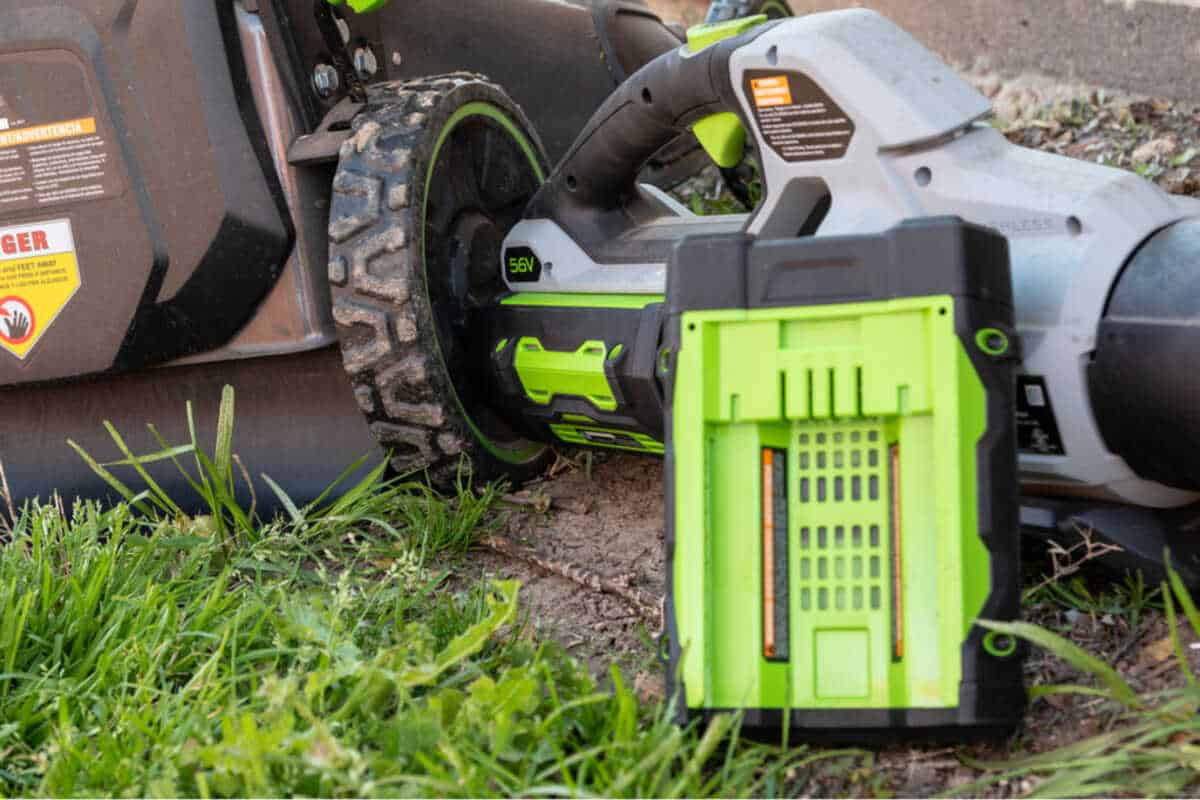However well you look after a lawn mower, eventually, after a certain amount of use, some parts start to fail, and some parts need to be replaced. If you have a riding lawn mower a walk-behind model or perhaps a self-propelled lawn mower it may incorporate a battery, meaning you don’t need to start it up by yanking a cord. However, the downside is that the battery is another component you will eventually need to change.
If you have to fit a new battery, you need to make sure the one you buy is compatible with your mower – so here we look at the question, how many amps is a lawn mower battery?
If you need to know how to change a lawn mower battery, here’s a video that will show you.
What does amps mean? And what about volts?
Mower batteries are rated either by amps or volts – or usually, by both. If the reason you want to know how many amps a lawn mower battery produces is that you need to buy a new one, it is worth taking a moment to understand what each of these means.
Amps and volts are two of the units we use to measure electricity – however, they are not the same.
Amps is the unit used to measure electrical current while volts is the unit used to measure voltage – or the difference in electrical potential. This might seem rather abstract, but there is a simple analogy that makes it easy to understand.
If you think of water moving through a pipe, the speed at which it moves is the equivalent to electrical current – this is what is measured in amps. Having more current is the same as having water that moves faster through the pipe.
The pressure that forces the water through the pipe is the equivalent to electrical voltage – this is what is measured in volts. Having a higher voltage is the equivalent of having a stronger water pump that pushes the water through the pipe.
For our purposes here, we don’t need to go any deeper into the science. All you really need to understand is that if you are looking for a new battery for a mower, you need to make sure that both the current and the voltage are compatible with your machine.
Choosing a battery
One thing that makes all this a little simpler is that nowadays, most riding mower batteries are rated at 12V – but in any case, you should make sure the battery’s voltage is compatible with your mower.
However, when choosing a new battery, there are two other things you need to pay attention to. The first is terminal position, and the second is Cold Cranking Amps (or CCA for short).
Terminal position
Terminal position refers to the physical configuration of the battery, and mower batteries come as either U1L or U1R.
As you may guess, the L and the R stand for Left and Right respectively. A U1L battery has the positive terminal near the left corner while a U1R battery has it near the right corner.
With this in mind, it is clear that you need to choose the right version to ensure that it will fit into your mower.
Cold Cranking Amps
When it comes to amps, the thing to pay attention to is Cold Cranking Amps. Since mower batteries are not used to provide a constant current but are there rather to deliver a powerful burst of current to get the engine started, this is the important number to take into account.
What this refers to is the current a battery can produce for a period of 30 seconds at a temperature of 0°F.
The reason this is important is that larger engines require more current to get them going. If you install a battery that can’t produce a powerful enough burst of current, at best, it will have to work extra hard to start your engine and will have a much shorter useful life.
At worst, a battery with a CCA rating that is too low won’t be able to start your engine at all.
How to choose the right battery

As we have mentioned, batteries have several different ratings. If you are replacing an old lawn mower battery, you need to check all of these and not just amps.
For this reason, if you are looking to replace a lawn mower battery, simply asking about the amp rating is probably the wrong question – you need to look at voltage, CCA and terminal position too.
The best way to do this is to check the user manual that came with your mower. If you don’t have it and this is the first time you are changing the battery, you can also look at the old battery – the voltage and the CCA should be written on it.
Once you have these details, you know what specifications to look for on the new battery you need to by. If you can’t find the specifications written on the battery, you might need to check with the manufacturer.
Incidentally, we mentioned above that it is important to install a battery with a high enough CCA rating to start your engine – however, don’t be tempted to go for one that is much higher than you need either.
If you install a battery with a higher rating than you need, it won’t damage your engine – but nor will it provide you with any benefit. It will probably just cost you extra money you don’t need to spend.
Amps in a battery-powered mower
You may also see an electric cordless mower that displays a number of amps, but this is something different.
This doesn’t refer to cold cranking amps since these mowers don’t have gas-powered engines. Rather, this is the amount of current the battery delivers to power the engine.
If this is the question you are asking, the answer is simple. Most modern battery-powered lawn mowers have 12amp engines – which means 12 amps of current is delivered constantly to drive the engine. This is sufficient for most home users.
Understand what “amps” means – and understand why you need to know
We all use electrical appliances and tools every day, but many people don’t understand the difference between amps, volts and watts. If you want to know how many amps is a lawn mower battery, the chances are, it’s because you need to buy a replacement. If this is the case, the number you should be looking at is Cold Crank Amps, and knowing this will help you find a compatible battery for your mower.

Leave a comment